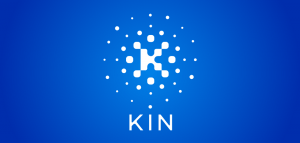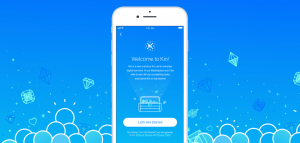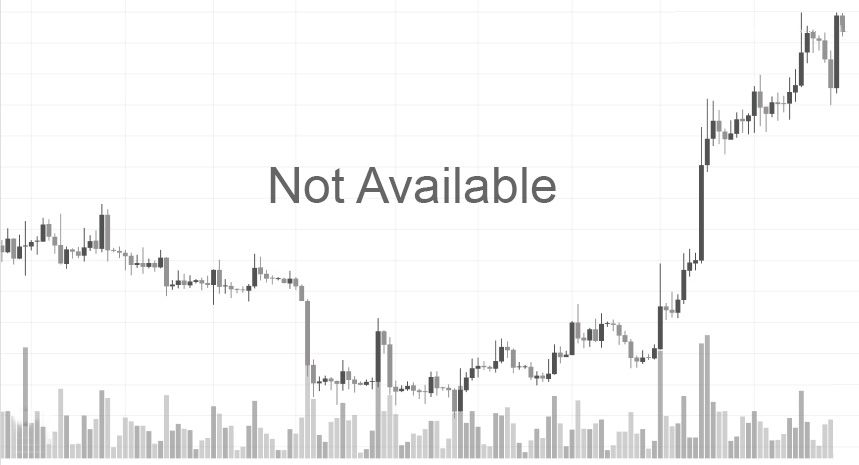Kin (KIN) is a cryptocurrency launched by the instant messenger service Kik which has existed as a freeware app focused on anonymity since 2010. KIN is seen as the foundation of a future alternative ecosystem of digital services.
What is Kin?
Making sense of what Kin promises to achieve as a currency starts by having a clear overview of its native platform – Kik. In short, Kik is a mobile, free-to-use messaging app, similar to Viber, launched by the Canadian company called Kik Interactive. Armed with some unique features, such as its insistence on anonymity and featuring an internal dedicated browser, it managed to attract some 300 million users worldwide (as of December 2018) following its launch, with most of them being of younger age.
Kin cryptocurrency was designed as part of an earlier effort to monetize the use of the platform which promised the use of free services from the outset. Following the decision to move away from the standard advertising schemes, the Kik developers saw an opportunity to create a system of “Kik Points†which the users would earn by interacting with targeted ads or playing various games on the platform. Once acquired, the Points could be used to buy digital stuff, such as special stickers and emojis on the Kik. The model proved to be successful with the audience, prompting the developers to try to apply similar principles in designing a full-blown cryptocurrency with a global ambition.
What is Kin Trying to Achieve?
The rise of the blockchain technology went hand in hand with the Kik team’s ambition to create a virtual asset whose use would be no more complicated than sending a message on its instant messaging system. Following its announcement back in 2017, Kin drew public attention by making a promise to resolve various issues which its developers perceived as hampering the establishment of a modern digital economy:
- Kin aims to promote the creation of an open ecosystem of apps which would be focused on the users themselves. This came as a response to what the Kin developers saw as the unwelcome domination of several large digital players that are trying to monetize the very users they profess to serve and destroy the competition in the process. With Kin, each participant in its ecosystem can be compensated for any new value created online, no matter if they are developers, full-time content creators or just contributing users.
- Kin wants to create a decentralized global digital economy system based on larger communities, without the need for a single all-powerful authority managing it. Instead of ceding power to a company or organization which pays little attention to the customers’ needs or their privacy, the main stakeholder in the Kin community are the consumers of a certain product (such as an app), its supporters, operators and investors. By avoiding to rely on advertising only, these participants would be incentivized to create economic value and share its benefits among themselves.
- The future Kin community hopes to level a playing field in which one’s successful product can promote the success of other solutions. With that in mind, the Kin platform plans to include support for free circulation of apps and their linking within its ecosystem. Based on this, the Kin hopes to create a community of developers who are willing to support each other and their creations and move away as far as possible from the existing corporate practices which pit one product against the other and have them exist in isolated environments.
How Does Kin Work?
Kin was initially launched as an ERC20 token running on top of the Ethereum blockchain and tasked with supporting all economic activities within the Kik ecosystem. This was followed by the incorporation of a custom Stellar for the purpose of ensuring easier scaling and the removal of fees from the transaction system. Finally, in March 2019, the Kin token was set for the migration from the ERC20 standard to its own native Kin blockchain. The swap will take place until June 12th, with the users being eligible for the automatic swap if they have earned their tokens through the Kin ecosystem apps. Otherwise, the swap will take place automatically once the apps migrate to a new platform.
Earning Kin is mainly done by participating in the network. The users can earn tokens by creating or curating content, as well by offering digital goods and services to other members of the Kim community. Once acquired, the tokens can be spent on the products and services and other valuables offered by the community members. Digital services include chat, payments and social media activities. Based on this, the Kin ecosystem hopes to establish itself as the solution of choice for the following groups of users:
- Various top rated professionals, experts and celebrities can create exclusive groups on the Kik platform and charge Kin for being allowed to access these. Acquired tokens can be used as compensation for their time investment and participation.
- Users are free to create premium content and put it behind the paywall involving the use of the Kin tokens. By being compensated in KIN, the users may be incentivized to go the extra mile in creating more quality content.
- The same goes for brands – they can use Kin to provide compensation to the users in exchange for their participation in various surveys related to their products.
- Users themselves can pay Kin to have their in-group messages receive special treatment in groups, in the form of shoutouts. There is also an option for the users to pay tips in Kin to their favored content creators.
- Finally, bots can be monetized to perform services, such as food ordering, in exchange for payment in Kin.

Kin Rewards Engine and DAS Pool
Kin is a cryptocurrency with fixed supply, capped at 10 trillion KIN and featuring fractional divisibility and long term resistance to inflation. Large fixed supply is supposed to ease its path to becoming a global unit of payment, whose market cap in March 2019 stood at just above USD 36 million. The supporting exchanges for the Kin trading include LAToken, Bitforex, HitBTC, CoinTiger, and Lykke, with the Kin team promising that more exchanges will become active in the near future.
Kin tokens existing as part of the pool controlled by the Kin Foundation are reserved for the scheme designated as the Kin Rewards Engine (KRE). The purpose of the Engine is to provide transparent and auditable rewards for all the ecosystem partners helping with bringing new users to the project. Rewards are proportionate to the contribution to the overall growth and sustainability of the platform.
Initially, the Kin Rewards Engine will serve to provide incentives to the category of users known as daily active spenders or DAS. This group comprises all unique users who spend Kin in each designated app. This includes using a peer-to-peer system to send Kin to other users, or doing the same to compensate the developer for the provided services.
Each day, a total amount of DAS per single developer will be calculated and these developers will be eligible for receiving rewards based on their contribution to the general DAS pool. Thus, the share of rewards will be larger as the developers manage to increase their DAS pool. The developers promise to introduce more comprehensive calculation methods for the future iterations of Kin.
What is the Kinit App?
In mid-2018, the Kin platform launched the Kinit application which allows the users to spend their Kin tokens in the app environment. Supported systems include both iOS and Android, with about 10k active users on a monthly basis. The developers describe Kinit as featuring the following options:
- The users can earn Kin tokens in the manner resembling a game, with rewards being distributed for the participation in various activities, ranging from completing surveys and polls to playing interactive videos, quizzes etc. Some of the sponsors for polls and quizzes include known brands such as Red Bull and Swarovski.
- The Kin the participants receive is being stored in a dedicated Kin wallet which is set up as soon as they download the app.
- Earned Kin tokens can be spent by visiting the Kin Marketplace which supports the use of this cryptocurrency for the purchase of gift cards from various brands such as Amazon and Google Play.
- Users can transfer Kin from one user to another as long as they use Kinit.
- Kinit was the first app in the Kin ecosystem that featured backup and restore functions. Those who lost their phones or deleted the app can download it again and have access to the same token balance and history they had prior to the loss.
Kin Implementation in Games
Kin wants to support peer-to-peer transactions among the users who play games with their peers from other countries and use different currencies. In January 2019, the Kin team started with the implementation of the Kin Software Development Kit for Unity which lets developers using the popular Unity game engine integrate Kin support in their mobile games.
Tools made part of the Kin SDK make it possible for the developers to make use of the following features:
- The SDK makes it easier for the developers to access the Kin blockchain and create UI elements and gaming experience based on the use of Kin cryptocurrency
- The developers can open new Kin accounts and create dedicated wallets more easily
- Implementing the features aimed at earning and spending Kin in games is more streamlined and should promote social engagement in game-centric communities
In addition to developers, another party standing to benefit from the use of Kin in games are the users themselves. They can avail themselves of the following features:
- In multiplayer games, Kin can be used to give players extra lives or incentivize them to join or help a team looking for a new player
- Games can feature achievements and challenges in which Kin is given out as a reward
- Players can give Kin tokens to each other as rewards for their contribution to individual sessions, sharing or liking
- Players can keep track of their Kin balances

Kin in Health and Fitness Apps
In addition to gaming, Kin has been implemented in several health/fitness programs in which this currency serves to incentivize users to exercise more and adopt healthier eating habits. Depending on its individual implementation, Kin is used as a financial reward for sticking to the health goals the users set for themselves:
- GoChallengeMe.club operates as a social platform in which people organize competitions and work on achieving a health goal defined at the community level. Those who manage to beat the challenge first will receive a set amount of Kin tokens. The same goes for participation in related polls or surveys. Received tokens can be subsequently used to organize one’s own competitions or pay for the gift cards offered by the Kin Marketplace.
- Kinetik is a similar implementation, but with more focus on fitness milestones. Based on the Kin’s integration with the FitBit, the users’ fitness activities are tracked, with the option to use Kin as rewards for completing challenges or as part of the reward scheme offered by regular businesses dealing with fitness.
Concerns and Competition
Not unlike other cryptos, Kin also faces some resistance from the institutions which in charge of regulating this market segment. In 2018, both the Kin Foundation and the currency’s parent Kik platform came under fire from the United States Securities and Exchange Commission (SEC). The reason for this is the fact that the SEC wants to regulate the use of Kin in a similar manner to that used for securities. This prompted the response of the Kin team which presented arguments that KIN was supposed to be used as a cryptocurrency from the outset, eliminating the need to treat it as a security.
Other forms of criticism of Kin are not related to its main role, but rather to the Kik messaging service it runs on. These have to do with the fact that advanced anonymity features offered by Kik can be abused by various criminals seeking to conduct their activities shielded from the legal persecution. Seeing that the fates of both Kik and Kin are closely related, there remains to be seen how the team will respond to these concerns.
Considering its close relationship with the parent platform, Kin faces no immediate competitors in this regard. Yet, the project with the social media in focus such as Reddcoin and Basic Attention Token (BAT) can be said to overlap with it in some segments, with Kin having the advantage of a rather large and clearly profiled user base.
